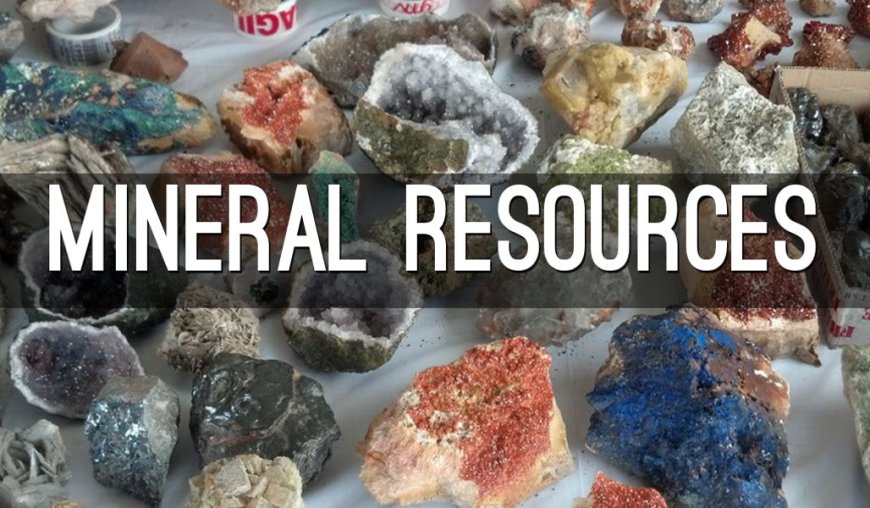Top Minerals in Jharkhand

Top Minerals in Jharkhand
Jharkhand is a mineral-rich state with significant reserves of various minerals. It has large deposits of minerals, providing a solid launching pad for mining and mineral based industries. It accounts for more than 40% of the mineral resources of India. Here are the top minerals found in Jharkhand:
-
Coal: Jharkhand has the largest coal reserves in India, accounting for more than 25% of the country's coal reserves. The state's coal deposits are mainly located in the districts of Bokaro, Dhanbad, Giridih, Ramgarh, and Chatra.
-
Iron Ore: Jharkhand is one of the leading producers of iron ore in India. The state's iron ore deposits are mainly located in the districts of West Singhbhum, Ranchi, Chaibasa, and Hazaribagh.
-
Copper: Jharkhand has significant reserves of copper, with deposits located in the districts of East Singhbhum and Hazaribagh.
-
Bauxite: Jharkhand has significant reserves of bauxite, which is a primary ore used for the production of aluminum. The major bauxite deposits in Jharkhand are located in Latehar, Lohardaga, and Gumla districts.
-
Limestone: Jharkhand has significant reserves of limestone, which is an important raw material for the cement industry. The state's limestone deposits are mainly located in the districts of Hazaribagh, Palamu, Ranchi, and Ramgarh.
-
Mica: Jharkhand is one of the leading producers of mica in India, with deposits located in the districts of Koderma, Giridih, and Hazaribagh.
-
Uranium: Jharkhand has significant reserves of uranium, which is an important nuclear fuel. The state's uranium deposits are mainly located in the district of East Singhbhum.
- Magnetite: Jharkhand has significant reserves of magnetite, which is an important iron ore used for the production of iron and steel. The major magnetite deposits in Jharkhand are located in the districts of West Singhbhum, Gumla, Ranchi, and Saranda.
-
Dolomite: Dolomite Jharkhand has significant reserves of dolomite, which is an important mineral used as a refractory material, in the production of steel, and as a source of magnesium oxide. The major dolomite deposits in Jharkhand are located in the districts of Hazaribagh and Palamu.
- Graphite: Jharkhand has significant reserves of graphite, which is an important mineral used in the production of batteries, lubricants, and other industrial products. The major graphite deposits in Jharkhand are located in the districts of Palamu and Gumla.
These minerals are vital to the economy of Jharkhand and the nation as a whole, and their exploitation has contributed significantly to the growth of the state's economy.
Coal
The coal mined in Jharkhand is mainly of high quality and is used for various purposes such as power generation, steel production, and cement manufacturing. The state is home to several coal-based power plants, including the Tenughat Thermal Power Station, the Chandrapura Thermal Power Station, and the Bokaro Thermal Power Station, among others.
Coal mining in Jharkhand has played an important role in the state's economic growth and development. However, it has also led to various environmental and social challenges such as deforestation, land degradation, air and water pollution, and displacement of local communities.
Iron Ore
The iron ore in Jharkhand is of high quality and is mainly used for steel production. The state is home to several steel plants, such as the Tata Steel Plant in Jamshedpur, which is one of the largest steel plants in India. Other major steel plants in the state include the Bokaro Steel Plant and the Indian Steel and Wire Products Plant.
Iron ore mining in Jharkhand has played a significant role in the state's economic growth and development. However, it has also led to various environmental and social challenges such as deforestation, land degradation, air and water pollution, and displacement of local communities.
However, Jharkhand is a major producer of other minerals such as coal, iron ore, mica, bauxite, and limestone, among others. These minerals have played a significant role in the state's economic growth and development, and they continue to be important sources of revenue for the state.
Bauxite is the primary source of aluminum, and it is used for various purposes such as making aluminum metal, refractory materials, and chemicals. The state of Jharkhand is home to several aluminum plants, including the Hindalco Industries Limited Plant in Muri and the Birla Copper Plant in Dahej.
Bauxite mining in Jharkhand has played an important role in the state's economic growth and development. However, it has also led to various environmental and social challenges such as deforestation, land degradation, air and water pollution, and displacement of local communities.
Limestone is a versatile mineral and is used in various industries such as cement, steel, and chemical industries. The state of Jharkhand is home to several cement plants, including the ACC Cement Plant in Sindri, the Lafarge Cement Plant in Jojobera, and the Birla Cement Plant in Dalmia.
Limestone mining in Jharkhand has played an important role in the state's economic growth and development. However, it has also led to various environmental and social challenges such as deforestation, land degradation, air and water pollution, and displacement of local communities.
Mica is a mineral used in various industries such as electrical and electronic industries, cosmetics, and building materials. Jharkhand's mica is known for its high quality and is exported to countries such as China, Japan, the United States, and the United Kingdom.
However, mica mining in Jharkhand has also been associated with various environmental and social issues such as deforestation, land degradation, child labor, and unsafe working conditions. The state government has taken various measures to address these challenges, such as the formulation of policies and guidelines for sustainable mining practices, the establishment of rehabilitation and resettlement schemes for affected communities, and the implementation of labor laws to prevent child labor.
Uranium is a mineral used primarily for nuclear power generation, but it is also used in medical and industrial applications. Jharkhand's uranium is processed at the Jaduguda Uranium Mine, which is operated by the Uranium Corporation of India Limited (UCIL). The Jaduguda mine is one of the oldest and deepest uranium mines in the world and has been in operation since 1967.
However, uranium mining in Jharkhand has also been associated with various environmental and social issues such as deforestation, land degradation, air and water pollution, and displacement of local communities. The state government has taken various measures to address these challenges, such as the formulation of policies and guidelines for sustainable mining practices, the establishment of rehabilitation and resettlement schemes for affected communities, and the implementation of environmental regulations to protect the ecosystem.
West Singhbhum district has the largest reserves of magnetite in Jharkhand, with deposits located in the areas of Gua, Chiria, Kalta, and Barsua. Gumla district also has significant reserves of magnetite, with deposits located in the areas of Hapatmuni and Pandri.
The magnetite deposits in Jharkhand are of high quality, containing between 55% to 70% iron content. The state government has identified magnetite as a key mineral for the development of the state, and several measures have been taken to promote its mining and processing.
Several companies have been granted mining leases for magnetite in Jharkhand, including the Steel Authority of India Limited (SAIL), Tata Steel, Jindal Steel and Power Limited (JSPL), and others. SAIL operates an integrated steel plant in West Singhbhum district, which sources its iron ore requirements from the nearby Chiria mines.
The development of magnetite resources in Jharkhand is expected to contribute significantly to the state's economic growth and generate employment opportunities for the local population.
Dolomite
Hazaribagh district has the largest reserves of dolomite in Jharkhand, with deposits located in the areas of Bagicha and Barhi. Palamu district also has significant reserves of dolomite, with deposits located in the areas of Hariharganj, Daltonganj, and Patan.
Several companies have been granted mining leases for dolomite in Jharkhand, including the Steel Authority of India Limited (SAIL), Tata Steel, and others. SAIL operates an integrated steel plant in the district of Bokaro, which sources its dolomite requirements from the nearby mines in Hazaribagh.
The development of dolomite resources in Jharkhand is expected to contribute significantly to the state's economic growth and generate employment opportunities for the local population. However, it is also important to ensure that mining and processing activities are carried out in an environmentally sustainable and socially responsible manner.
Palamu district has the largest reserves of graphite in Jharkhand, with deposits located in the areas of Karra, Murhu, and Kuke. Gumla district also has significant reserves of graphite, with deposits located in the areas of Bishunpur and Chainpur.
Several companies have been granted mining leases for graphite in Jharkhand, including the Graphite India Limited, Jharkhand Graphite Mine Private Limited, and others. The state government is also taking steps to promote the development of the graphite industry in Jharkhand, including the establishment of a graphite processing unit in Gumla district.
The development of graphite resources in Jharkhand is expected to contribute significantly to the state's economic growth and generate employment opportunities for the local population. However, it is important to ensure that mining and processing activities are carried out in an environmentally sustainable and socially responsible manner, taking into account the concerns and interests of local communities.
What's Your Reaction?






















































